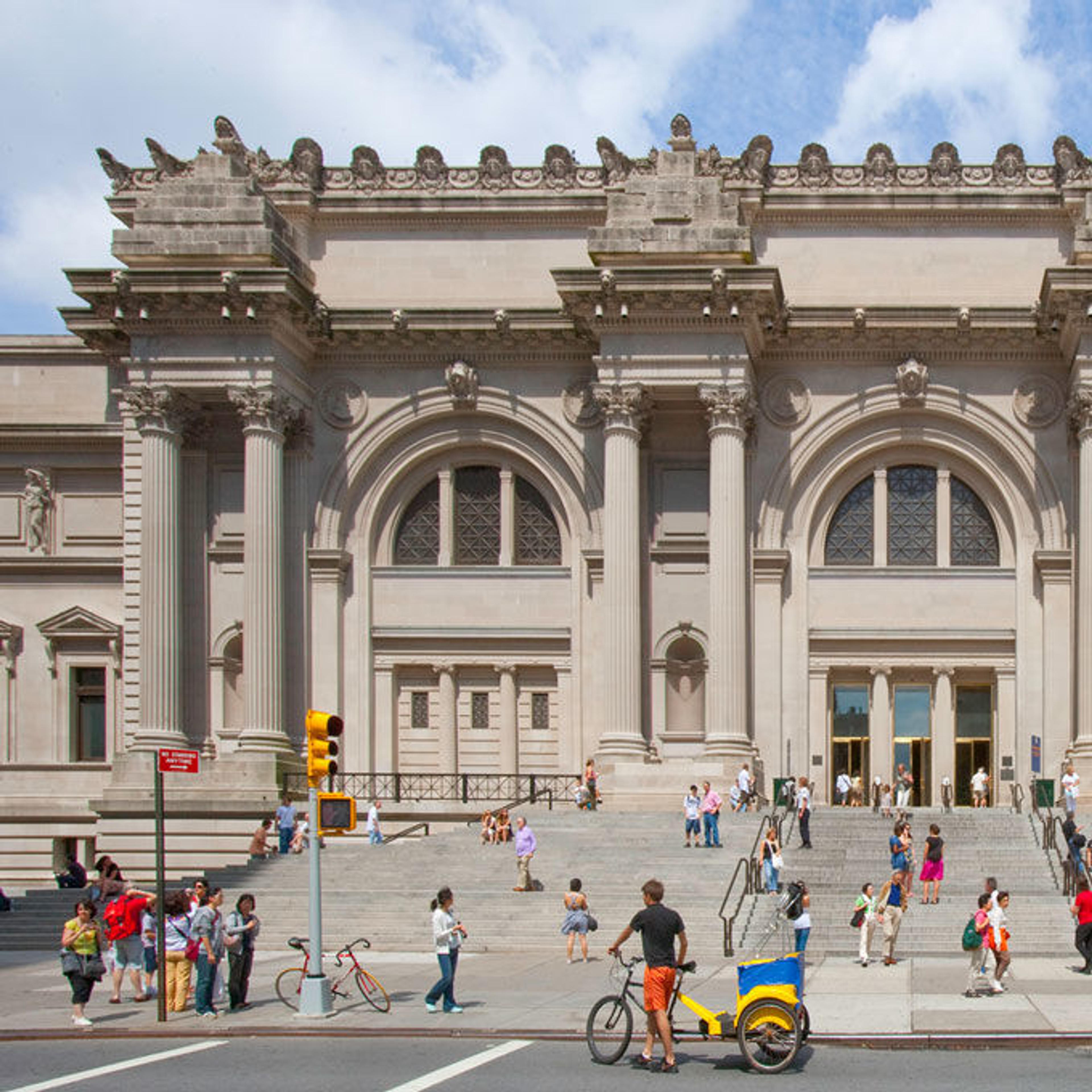Photograph from Views of The Cloisters, an unbound album of black-and-white photographs of George Grey Barnard's Cloisters produced around the time of its purchase by the Met. The Cloisters Library and Archives, The Metropolitan Museum of Art, New York
«Eighty-five years ago today, on June 12, 1925, The Metropolitan Museum of Art purchased a collection of medieval sculpture and architectural fragments from George Grey Barnard (1863–1938), a prominent American sculptor and collector. This acquisition formed the nucleus of what would become The Cloisters, the branch of the Museum located in Northern Manhattan and devoted to the art and architecture of medieval Europe.» In honor of the anniversary, I took a look through the wealth of printed and online materials that exists about the founding of The Cloisters and thought I would share the highlights of the story here.
While working in rural France before World War I, Barnard supplemented his income by locating and selling medieval sculpture and architectural fragments that had made their way into the hands of local landowners over several centuries of political and religious upheaval. He kept many pieces for himself and, upon returning to the United States, opened to the public a churchlike brick structure on Fort Washington Avenue (near the current 190th Street subway station) filled with his collection, among the first installations of medieval art of its kind in America. The museum and all its contents were purchased by the Metropolitan through the generosity of the philanthropist and collector John D. Rockefeller Jr. (1874–1960). Metropolitan curators rearranged the collection and reopened the building to the public in 1926, and later experimented with planting herbs and flowers at the site.
By 1927, it was clear that a new, larger building would be needed to display the collection in a more scholarly fashion. In addition to financing the conversion of 66.5 acres of land just north of Barnard's museum into a public park for the City of New York—inside which the new museum building would be located—and donating seven hundred acres of additional land to the state of New Jersey across the Hudson River to ensure that the view from The Cloisters remain unsullied, Rockefeller contributed medieval works of art from his own collection (including the celebrated set of seven South Netherlandish tapestries depicting "The Hunt of the Unicorn") and established an endowment for operations and future acquisitions. Longtime Museum Trustee and President George Blumenthal also made significant gifts of architectural sculpture that greatly augmented The Cloisters collection.
Photograph from Views of The Cloisters. The Cloisters Library and Archives, The Metropolitan Museum of Art, New York
The new building was designed by Charles Collens (1873–1956), the architect of New York City's Riverside Church, in a simplified, paraphrased medieval style, incorporating and reconstructing the cloister elements acquired by Barnard. Joseph Breck (1885–1933), a curator of decorative arts and assistant director of the Metropolitan, and James J. Rorimer (1905–1966), who would later be named director, were primarily responsible for the interior. Balancing Collens's interpretation with strict attention to historical accuracy, Breck and Rorimer created in the galleries a clear and logical flow from the Romanesque (ca. 1000–ca. 1150) through the Gothic period (ca. 1150–1520).
Photograph from Views of The Cloisters. The Cloisters Library and Archives, The Metropolitan Museum of Art, New York
The Cloisters was formally dedicated on May 10, 1938. Its five distinct spaces are named after the original medieval French cloisters—Saint-Michel-de-Cuxa, Saint-Guilhem-le-Désert, Bonnefont-en-Comminges, Trie-en-Bigorre, and Froville—whose components were incorporated into the modern museum building. The result is not a copy of any particular medieval structure but rather an ensemble of spaces, rooms, and gardens that provide a harmonious and evocative setting in which visitors can experience the rich tradition of medieval artistic production. Just as cloisters provided sheltered access from one building to another within a monastery, here they act as passageways from gallery to gallery. They provide an inviting place for rest, contemplation, and conversation, as they did for their original monastic population.
Robert Campin and Workshop (South Netherlandish, Tournai (ca. 1375–1444). Triptych with the Annunciation, known as the "Merode Altarpiece," ca. 1425–1430. Made in Tournai, South Netherlands. Oil on oak. The Metropolitan Museum of Art, New York, The Cloisters Collection, 1956 (56.70a–c)
The collection at The Cloisters continues to grow, thanks to Rockefeller's endowment and other significant gifts. Among its masterpieces are an early-fifteenth-century French illuminated book of hours, the Belles Heuresof Jean de France, Duc de Berry (on view in a special presentation at the Main Building through June 13); a richly carved twelfth-century ivory cross attributed to the English abbey of Bury St. Edmunds; stained-glass windows from the castle chapel at Ebreichsdorf, Austria; a stone Virgin of the mid-thirteenth century from the choir screen of Strasbourg Cathedral in France; and the so-called Merode Triptych (shown above), representing the Annunciation, by the fifteenth-century Netherlandish master Robert Campin.
Complementing the collection are more than six thousand objects of medieval art exhibited in several galleries on the first floor of the Museum's Main Building on Fifth Avenue. A single curatorial department oversees medieval holdings at both locations. The collection at the Main Building displays a somewhat broader geographical and temporal range, while the focus at The Cloisters is on the Romanesque and Gothic periods. Renowned for its architectural sculpture, The Cloisters also rewards visitors with exquisite illuminated manuscripts, stained glass, metalwork, enamels, ivories, and tapestries.
James Moske is managing archivist in the Museum Archives.
Related Links
Views of the Cloisters [Note: This is a large PDF (34 MB).]
Museum Archives
The Cloisters Museum and Gardens
Department of Medieval Art
